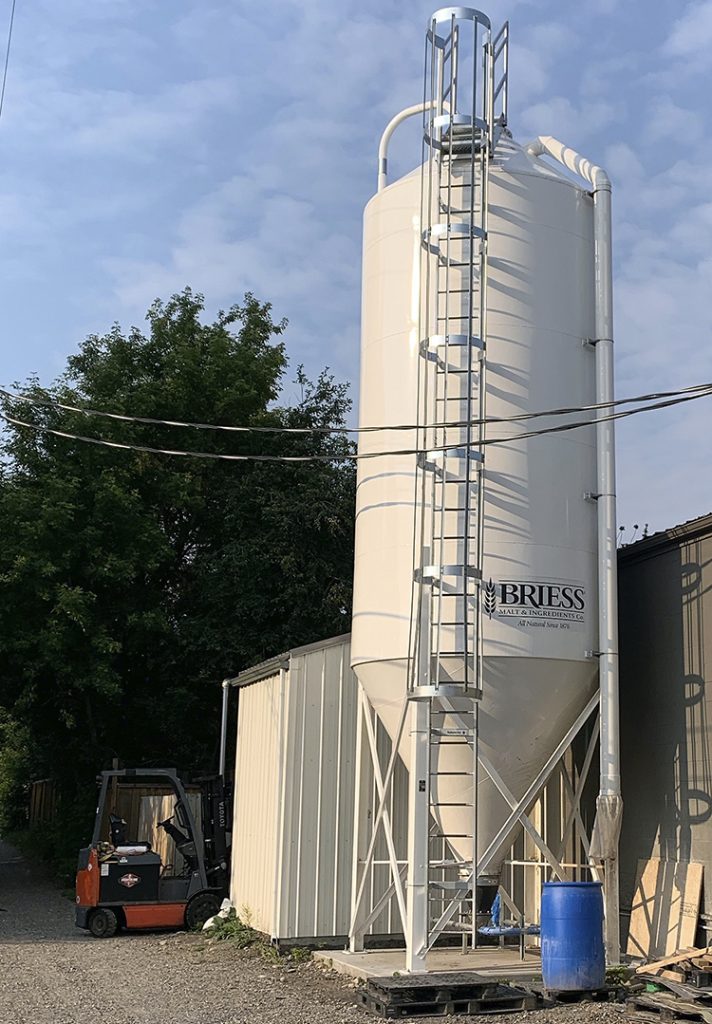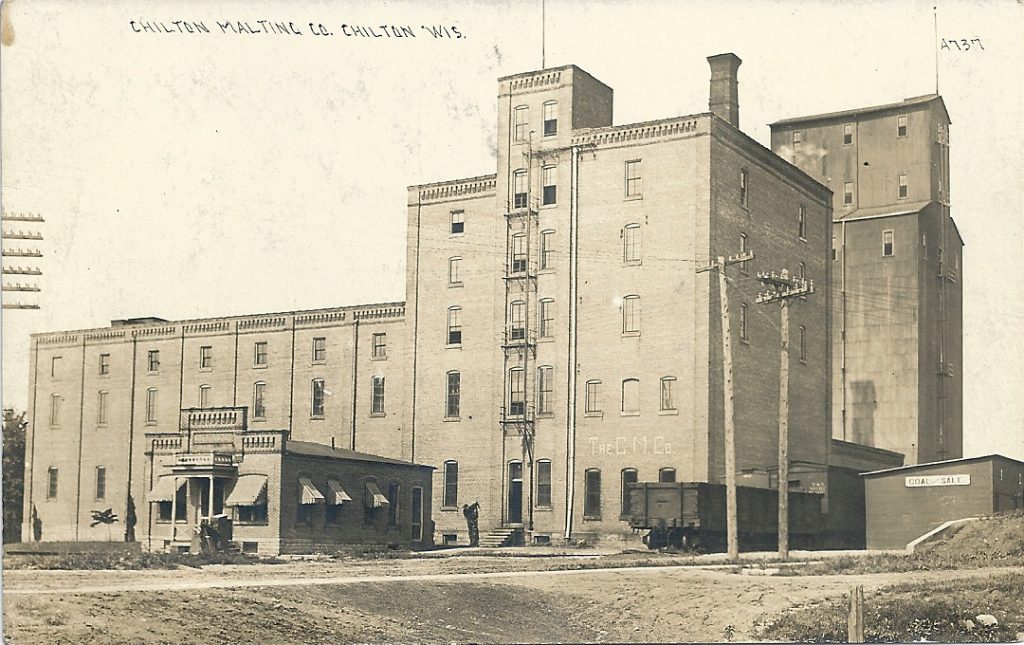Whether you operate an existing brewery or are in the planning stages for a new one, the idea to add a silo has probably surfaced from time to time. Recently founder Gustov Dose of Mountains Walking Brewery in Bozeman, MT reached out to us about transitioning his facility to silo malt storage. One of his main goals was to free up valuable floor space allowing them to increase production capacity.

For more than 20 years Briess has been helping craft brewers like Mountains Walking make the transition smoothly. We initiated our Silo Program to guide breweries through the installation process and to become better positioned for growth.
Of course, the number one reason to install a silo is potential cost savings. As your brewery grows, improving efficiencies and controlling costs becomes more and more important. But don’t forget about additional benefits. The mere presence of the silo visually enhances a brewery, including the potential for valuable real estate to add a logo or marketing message. Bulk transfer of malt decreases staff hours and helps eliminate back injuries that may result from handling 50 lb. malt bags. Bulk malt deliveries also decrease the amount of recycling you need to manage. So, when is the right time for a silo? Here are some things to consider.

Usage
The key criteria for silo readiness is rate of usage. Suggested turnover time for grain stored in a silo (approximately 48,000 pounds) is six to eight weeks. For example, using a 20bbl system, this translates into approximately 60 brews, or two brews a day, five days a week = six weeks for complete usage.
Size
One of the main reasons we suggest a 60,000 lbs. maximum capacity silo is freight. Bulk trucks hold between 48,000 and 50,000 lbs., depending on the type of truck and density of the grain. The freight bill is based on a minimum of 48,000 lbs. per shipment, even if the total is less than that. We, therefore, suggest that you take full truckloads whenever possible. To capture these efficiencies, we recommend a 1,900 cu ft silo.
Does the silo need to completely empty before filling it? We suggest the opposite – a small amount of grain in the bottom of the silo acts as a cushion for incoming grain, preventing breakage. However, we also recommend completely emptying the silo a minimum of 1-2 times every year. This helps remove any build-up of husk and chaff and helps monitor and control any potential problems.
Silo Features
So, if you fit the above criteria, now what? What features should your new silo have? Where do you look for a suitable silo? We suggest the following:
- The hopper should have a 45º minimum angle.
- Optimum material used for the silo itself should be smooth-sided, epoxy-coated both inside and out – or at the very least a mild steel.
- The bottom discharge opening should be between 12-14 inches.
- Install a permanently mounted ladder with a safety cage.
- Further measures should be taken to prevent unauthorized entry into the silo and surrounding area. Become familiar with confined space guidelines including federal, state, and any local regulations.
- Unloading the truck and filling the silo: We suggest you permanently mount a four-inch line equipped with a quick-connect coupling for ease of unloading.
- Be sure the coupling and all connections are filed smooth. This can be an area that will cause a great deal of damage to grain if not smooth.
- Install an air vent equipped with a dust collection cyclone or filter sock. If using a filter sock, we suggest that it is at working level so that a person of average height can stand on the ground to replace the sock.
Taking the Plunge
Tyler Nail, Brewer at Mountains Walking, has been thrilled to upgrade to a silo and get onboard Briess’ Silo Program. Since starting up he said, “the silo and malt handling system has freed up valuable real estate, allowing us to increase production capacity. The installation was smooth and husk integrity has been solid fill after fill. Thanks to the City of Bozeman for working with us on permitting and being so patient.”
If you’re thinking of adding a silo to your operation, please contact us first. While this post outlines several major components, there are additional considerations. Bulk transfer equipment/systems that cause the least amount of breakage to malt, bulk deliveries, and ROI are all additional areas on which we can provide guidance.
As we all know, every brewery is different. What’s right for one will not be right for another.
If a silo is more than you need, ask about our Super Sack program, including financing. Let’s look at your needs and find a solution that fits you best.
Cheers!


